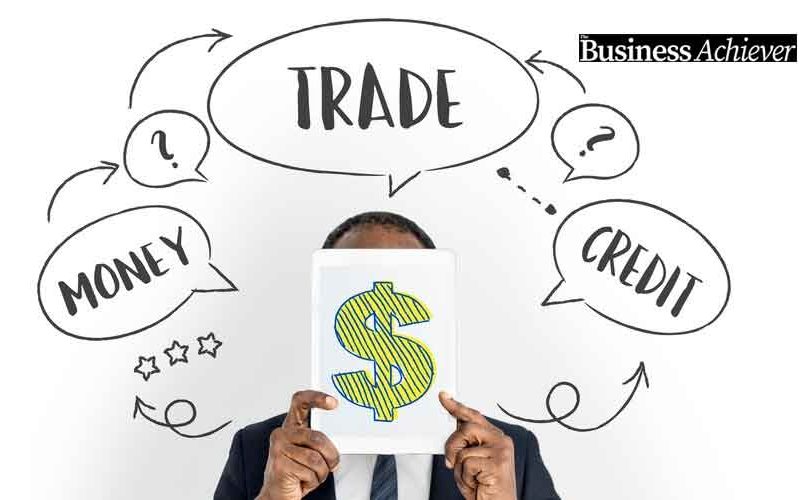Explore how tariff policies under Donald Trump impact global trade and economic trends
Tariff policies play a pivotal role in shaping global trade dynamics, corporate strategies, and economic trends. President-elect Donald Trump’s renewed focus on implementing broad new tariffs is raising concerns among companies and investors alike. From proposed levies on imports from Mexico, Canada, and China to potential impacts on inflation and supply chains, small investors need to stay informed about how these policies could affect their portfolios.
This article explores the potential consequences of Trump’s proposed tariff measures, how companies are preparing, and what small investors should consider to navigate the shifting trade landscape effectively.
Overview of Trump’s Proposed Tariff Changes
In a recent announcement on Truth Social, President-elect Trump outlined his intention to impose significant new tariffs on the first day of his presidency. The proposed measures include:
- 25% tariffs on all goods imported from Mexico and Canada.
- An additional 10% tariff on all imports from China, on top of existing levies.
The president-elect emphasized these tariffs as part of a broader strategy to address immigration and illegal drug concerns. Markets responded with mixed reactions—stocks showed volatility, while the dollar strengthened following the announcement.
Corporate Concerns Over Tariff Impacts
Companies across various sectors have raised alarms about the potential fallout from these tariffs. Earnings calls in recent weeks have been dominated by discussions of strategies to mitigate tariff-related costs, with many firms indicating they may pass these costs onto consumers.
Price Hikes as a Mitigation Strategy
- Stanley Black & Decker plans to implement price increases quickly to offset additional tariff expenses. CFO Patrick Hallinan stated that pricing adjustments would be the first step to cushion the financial impact.
- Logitech echoed similar sentiments, with CFO Matteo Anversa noting that price adjustments remain a key option to address rising costs.
- AutoZone highlighted the likelihood of inflationary pressures across its industry, driven by higher import costs.
In contrast, Ross Stores has signaled its intent to maintain competitive pricing, aiming to attract cost-conscious consumers amidst higher prices from competitors.
Supply Chain Diversification
China remains a major target of the proposed tariffs, prompting companies to reduce reliance on Chinese imports:
- Williams Sonoma has cut its sourcing from China to 25%, down from 50% a few years ago. The company has also bolstered domestic manufacturing capabilities.
- Stanley Black & Decker and Wolverine World Wide, which oversees brands like Merrell and Saucony, are accelerating efforts to source products from alternative markets such as Vietnam, Bangladesh, and Indonesia.
Stockpiling Inventory
Some companies are adopting a defensive approach by stockpiling inventory ahead of potential tariff implementations:
- Lifetime Brands increased inventory levels as a precautionary measure, citing the effectiveness of similar strategies during previous tariff cycles.
- TJX Companies, the parent of TJ Maxx and Marshalls, sees an opportunity to benefit from manufacturers importing goods early to avoid tariffs. This could create surplus inventory, enabling TJX to source goods at favorable prices.
Potential Economic and Market Implications
Inflationary Pressures
Goldman Sachs analysts predict that the proposed tariffs could lead to higher consumer prices, reducing disposable income. Inflationary impacts, while not guaranteed, depend on factors like the scale of tariffs and how businesses pass on costs to consumers.
GDP Growth
Tariffs have a direct impact on economic growth. Morningstar’s chief US economist, Preston Caldwell, noted that higher tariffs reduce real GDP. While the magnitude of the impact depends on the scale and duration of the tariffs, long-term economic activity could slow as businesses and consumers adjust to higher costs.
Market Volatility
Threats of tariffs create uncertainty for businesses and investors. Solita Marcelli, chief Americas investment officer at UBS Global Wealth Management, observed that such policies could trigger short-term volatility in markets. However, she remains optimistic about US stocks, particularly in the technology, utilities, and financial sectors, which may prove resilient against trade disruptions.
Industries Most Affected by Tariffs
Technology
The technology sector, reliant on global supply chains, could face significant challenges. Companies importing components from China, such as semiconductors, may see increased costs. Diversification of production to other regions could alleviate some pressure, but this often requires time and investment.
Automotive
Tariffs on imported auto parts may increase manufacturing costs, leading to higher vehicle prices. Automakers with domestic production capabilities may gain a competitive advantage over import-dependent competitors.
Consumer Goods
Retailers relying heavily on imports, such as Walmart and Target, may pass additional costs onto consumers. However, companies with strong supply chain control and domestic manufacturing may fare better.
Apparel and Footwear
The apparel industry is particularly sensitive to tariffs. Brands like Wolverine World Wide are already shifting production away from China to regions such as Southeast Asia to mitigate risks.
Agriculture
Farmers exporting products to countries imposing retaliatory tariffs could face reduced market access, affecting profitability and investment opportunities in agriculture-related stocks.
Strategies for Small Investors
- Diversify Portfolios Spreading investments across various sectors and geographies can help mitigate risks associated with tariff changes. Emerging markets, particularly those benefiting from supply chain shifts, offer potential opportunities.
- Focus on Domestic Companies Investing in companies with robust domestic supply chains or minimal reliance on imports can reduce exposure to tariff-related risks. Sectors like utilities and healthcare often show resilience in such scenarios.
- Monitor Policy Developments Staying updated on tariff announcements and trade policies is crucial. Identifying industries targeted by new tariffs enables investors to make informed adjustments to their portfolios.
- Hedge Against Inflation Tariffs can drive inflation, eroding the value of fixed-income investments. Assets like Treasury Inflation-Protected Securities (TIPS), real estate, and commodities can act as a hedge.
- Invest in Resilient Sectors Sectors like technology and renewable energy may offer long-term growth opportunities despite short-term challenges. Companies with innovative products and strong demand can weather tariff-related disruptions.
Long-Term Outlook on Tariffs
While the immediate impacts of tariffs may include higher prices and reduced corporate margins, the long-term effects depend on how businesses adapt. Companies with strong pricing power may pass on costs with minimal impact on volumes, while others may face reduced competitiveness.
For investors, the key lies in identifying winners and losers in this shifting landscape. Companies that proactively diversify supply chains, invest in domestic capabilities, and maintain competitive pricing are better positioned for growth.
Tariff changes under the new administration are poised to reshape global trade dynamics, creating both risks and opportunities for small investors. By understanding the potential impacts on industries, monitoring policy developments, and adopting diversified investment strategies, investors can navigate these challenges effectively. While uncertainty remains, proactive decision-making and a focus on resilient sectors can ensure long-term portfolio stability and growth.







